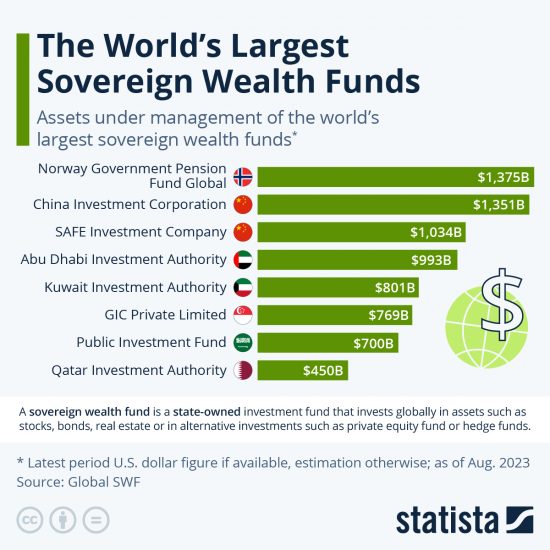91 percent of losses in Asia Pacific were uninsured
SINGAPORE – Media OutReach Newswire – 2 April 2024 – Aon plc (NYSE: AON), a leading global professional services firm, today published Asia Pacific insights from its 2024 Climate and Catastrophe Report, which identifies natural disaster and climate trends both globally and for Asia Pacific, to help businesses make better decisions to manage volatility and enhance resilience.
The report reveals that 398 natural disaster events occurred globally in 2023, resulting in a USD 380 billion (2022: USD 355 billion) economic loss during the 12-month period under review – 22 percent above the 21st-century average – driven by significant earthquakes and relentless severe convective storms (SCS) in the U.S. and Europe.
Economic losses in the Asia Pacific region specifically, driven primarily by floods in China and drought in India, reached USD 65 billion – 48 percent lower than the 21st-century average. Meanwhile, the ‘protection gap’ – the proportion of total losses that were uninsured – for Asia Pacific stood at 91 percent, with only 9 percent of losses, or USD 6 billion, of economic losses covered by insurance. This is below the 21st-century average of USD 15 billion, highlighting the urgency to expand insurance protection in the region.
George Attard, CEO of Reinsurance Solutions for Aon’s Asia Pacific region, said: “The findings from Aon’s 2023 Global Risk Management Survey for Asia Pacific demonstrate that although climate change is not featured in the top ten, it directly impacts four of the top ten risks for businesses, that is business interruption, rapidly changing market trends, supply/chain distribution failure and regulatory or legislative changes. With climate driving new extreme weather records, businesses increasingly need to quantify and address the direct and indirect impact of climate risk. Businesses must therefore leverage advanced analytics and experts to help analyse climate trends and make better decisions to address risks and increase the resiliency of their operations, workforces and the communities they impact.”
Flooding remains a recurring threat
The 2024 Climate and Catastrophe Insight report reveals that flooding remained a recurring threat in Asia Pacific, with annual losses having exceeded USD 30 billion every year since 2010. Flood losses overall proved to be the costliest peril for the fourth consecutive year, accounting for more than 64 percent of the loss total in 2023. About half of the Asia Pacific losses were related to flooding in China, which resulted in more than USD 32 billion economic losses and USD 1.4 billion of insured losses. Many places saw significant flooding and record rainfall events in 2023, including Hong Kong, South Korea, India, and Pakistan. The South Asia floods (Pakistan and India) resulted in nearly 2,900 fatalities. Much of the impact stemmed from regions where insurance penetration is very low.
Areas with high populations are generally better equipped for natural disasters through investment and potentially higher insurance take-up, but the flipside is that the significant urban growth can lead to unforeseen risks, especially when it comes to unprecedented weather events. In Hong Kong for example, typhoons are expected, and the associated risks are well understood. However, the 2023 rainfall-induced flash flooding was beyond average levels, exposing significant protection gaps.
With economic losses of nearly USD 13 billion and insured losses of USD 1.4 billion, tropical cyclone losses for Asia and Oceania were 53 percent, and 70 percent below their 21st-century averages. The number of fatalities from tropical cyclones stood relatively low for the second year in a row. This might be a result of improved disaster response and adaptation measures; however, many communities remain vulnerable in countries such as Myanmar, where at least 463 people died due to the impact of Cyclone Mocha in May.
Increasing number of events
The Asia Pacific region was rocked by several large earthquakes in 2023. Nearly 1,500 people were killed after a series of earthquakes in Afghanistan’s Herat Province in October, and more than 200,000 homes were damaged in China’s Gansu Province in December. Extreme heat was another unexpected peril in the Asian region in 2023. Parts of the region experienced prolonged periods of extreme temperatures in 2023. China endured a new national heat record with the temperature soaring to 52.2°C in July.
Notably, a multi-week-long heatwave impacted many countries in South and Southeastern Asia in April and May. Additional losses in billions of dollars resulted from drought conditions that affected China and India particularly.
Brad Weir, head of analytics of Reinsurance Solutions in Asia for Aon, said: “The 2024 Climate and Catastrophe Insight report highlights the vulnerability of the region to disasters and how the lack of insurance exacerbates business risks. With climate variability we see natural hazards impacting areas that in recent times may have been largely unaffected, meaning those communities are generally under-prepared and may not have adequate insurance in place. Closing the protection gap will therefore continue to pose a challenge but also a huge opportunity for Asia Pacific. There is a growing need for advanced climate modelling and risk assessment analytics for better disaster preparedness and planning to reduce risk, protect lives and promote resilience.”
The top 10 Asia Pacific economic loss events in 2023 were:
| Date | Event | Location | Deaths | Economic Loss
($ billion) |
| 05/22-09/30 | Flooding | China | 370 | 32.15 |
| 04/01-10/31 | Drought | India | N/A | 3.60 |
| 01/01-12/31 | Drought | China | N/A | 2.70 |
| 05/13-05/15 | Cyclone Mocha | Myanmar, Bangladesh, India | 466 | 2.30 |
| 07/26-08/01 | Typhoon Doksuri | Philippines, Taiwan, China, Vietnam | 106 | 2.15 |
| 10/04 | Flooding | India | 179 | 1.40 |
| 05/28-06/02 | Flooding | Japan | 5 | 1.35 |
| 08/26-09/03 | Typhoon Saola | Eastern Asia | 1 | 1.35 |
| 04/01-04/30 | Flooding | China | 0 | 1.00 |
| 12/18 | Earthquake | China | 151 | 1.00 |
The top 10 global economic loss events in 2023 were:
| Date | Event | Location | Deaths | Economic Loss
($ billion) |
| 02/06-02/20 | Turkey and Syria Earthquakes | Turkey and Syria | 59,272 | 92.4 |
| 05/22-09/30 | China Floods | China | 370 | 32.2 |
| 10/25-10/26 | Hurricane Otis | Mexico | 52 | 15.3 |
| 01/01-06/30 | La Plata Basin Drought | Brazil, Argentina, Uruguay | N/A | 15.3 |
| 01/01-12/31 | U.S. Drought | United States | N/A | 14.0 |
| 05/13-05/17 | Emilia-Romagna Floods | Italy | 15 | 9.8 |
| 03/01-03/03 | Severe Convective Storm | United States | 13 | 6.2 |
| 07/21-07/26 | Severe Convective Storm | Europe | 11 | 5.8 |
| 08/08-08/17 | Hawaii Wildfires | United States | 100 | 5.5 |
| 03/31-04/01 | Severe Convective Storm | United States | 37 | 5.5 |
With efforts to limit global warming, business and investors can consider climate change from three perspectives: protecting their portfolios against financial risks; benefiting from growth opportunities in climate solutions; and determining how to have a positive impact and play a role in a world moving to net-zero.
Insights to Aon’s 2024 Climate and Catastrophe Insight report for Asia can be found at the following link: Climate Events in Asia Create Opportunities for Collaboration and Innovation | Aon
Hashtag: #aon
The issuer is solely responsible for the content of this announcement.
About Aon
![]() Aon plc (NYSE: AON) exists to shape decisions for the better — to protect and enrich the lives of people around the world. Our colleagues provide our clients in over 120 countries and sovereignties with advice and solutions that give them the clarity and confidence to make better decisions to protect and grow their business.
Aon plc (NYSE: AON) exists to shape decisions for the better — to protect and enrich the lives of people around the world. Our colleagues provide our clients in over 120 countries and sovereignties with advice and solutions that give them the clarity and confidence to make better decisions to protect and grow their business.
Follow Aon on ![]() LinkedIn,
LinkedIn, ![]() X,
X, ![]() Facebook and
Facebook and ![]() Instagram. Stay up-to-date by visiting Aon’s
Instagram. Stay up-to-date by visiting Aon’s ![]() newsroom and sign up for news alerts
newsroom and sign up for news alerts ![]() here.
here.
Disclaimer
The information contained in this document is solely for information purposes, for general guidance only and is not intended to address the circumstances of any particular individual or entity. Although Aon endeavours to provide accurate and timely information and uses sources that it considers reliable, the firm does not warrant, represent or guarantee the accuracy, adequacy, completeness or fitness for any purpose of any content of this document and can accept no liability for any loss incurred in any way by any person who may rely on it. There can be no guarantee that the information contained in this document will remain accurate as on the date it is received or that it will continue to be accurate in the future. No individual or entity should make decisions or act based solely on the information contained herein without appropriate professional advice and targeted research.






